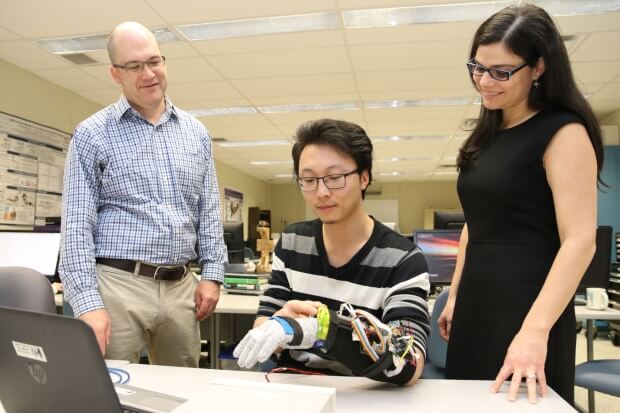Researchers from Western University have developed a functional prototype of a new tremor suppression glove. This device aims to provide more independence to patients suffering from Parkinson’s Disease.
Across the world, there are around 10 million people with Parkinson’s disease, a neurodegenerative disorder that causes a loss of dopaminergic neurons in the area of the brain known as the substantia nigra.
This progressive disease greatly hinders a patient’s motor skills, causing uncontrollable tremors, loss of balance, among other debilitating symptoms. Unfortunately, those suffering from Parkinson’s disease struggle to perform everyday activities like eating or getting dressed.
Looking to improve the quality of life for Parkinson’s patients, a team of researchers from Western University have developed a new tremor suppression glove.
The device utilizes a series of motors and sensors to help distinguish between the voluntary motions of a patient and the involuntary tremors that stem from the disease. A number of the key components included in this functional prototype were 3D printed.
3D Printed Tremor Suppression Glove Aims to Provide Independence to Parkinson’s Patients
The 3D printed tremor suppression glove took four years to complete. The research team is currently waiting on ethics approval to test the assistive device on Parkinson’s patients. Western University has already developed the software that controls the glove. The software program was created with the help of research subjects with Parkinson’s disease.
“I believe that with a technology like this, could remain independent for longer. They could perform activities of daily living in a more effective manner for a longer amount of time,” said Ana Luisa Trejos, an assistant professor in Western’s department of electrical and computer engineering.
The 3D printed prototype is able filter out and suppress tremors, while still allowing the voluntary motions to transpire. This is advantageous over previous glove designs, which can only stop tremors by suppressing all motion in the hand and wrist.
Led by Trejos, the researchers designed the 3D printed glove prototype to fit the left hand of graduate student Yue Zhou. In the future, the assistive device will be customized to fit each patient’s hand and forearm. According to the research team, each tremor suppression glove should cost under $1,000 to create.
“Our goal is to really get it out there for people to be able to use it, so potentially if a company is interested in commercializing the product, then we’d be on board with supporting that,” Trejos adds.
Website: LINK




